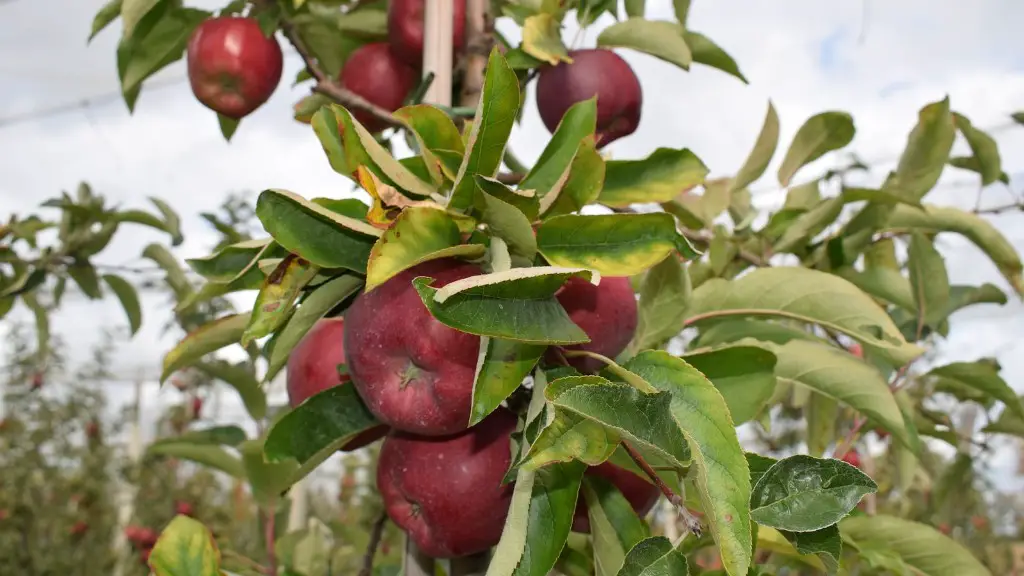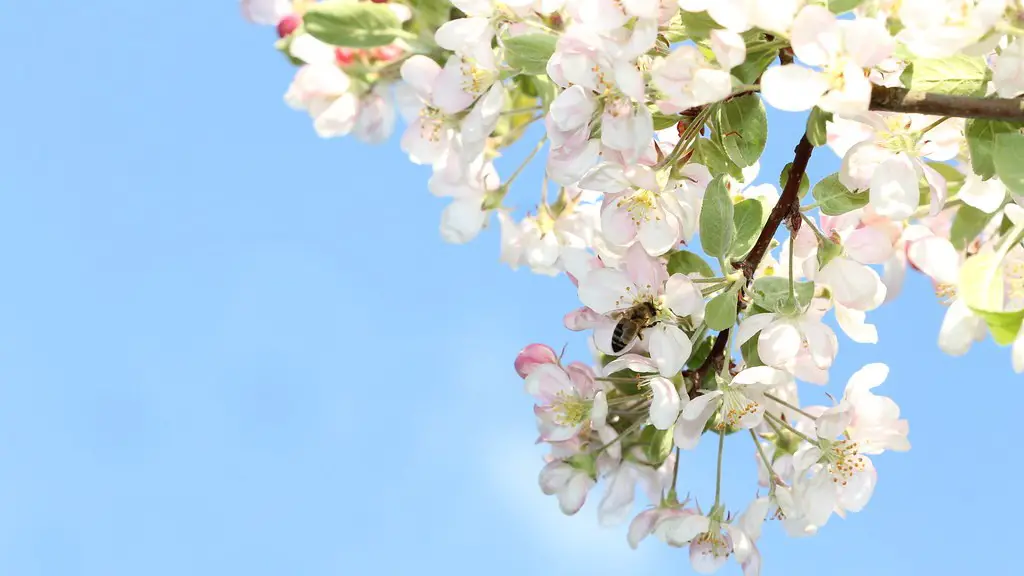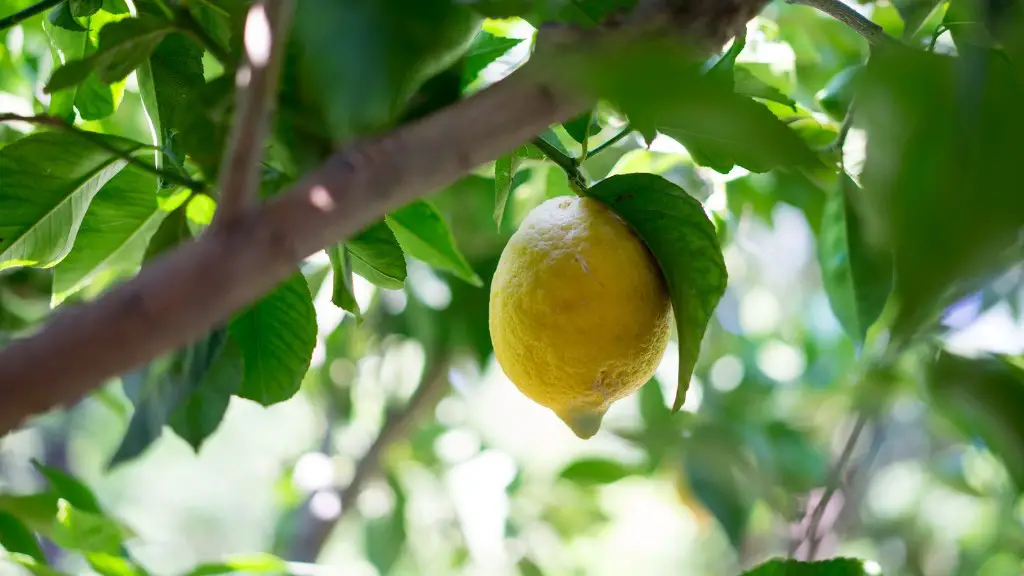When spring arrived this year, I noticed that my apple tree was not producing any fruit. After further scrutiny and research, I have come to the conclusion that there are several possible reasons why there are no apples on my tree this year.
Firstly, the apple tree may have been infected with a virus. Viruses can cause the tree to produce smaller fruit, produce fruit later in the season, or not produce fruit at all. In addition, viruses can cause the leaves or twigs to appear distorted or discolored and may cause premature dropping of the fruit. If the virus is left unchecked and allowed to grow, it will eventually kill the tree.
Secondly, the variety of the tree may be the issue. Some varieties of apple trees do not produce fruit until they reach a certain age, or until a second variety of apple tree is planted near it. If the tree is a varietal that does not produce fruit until it is much older, that could be the cause.
Thirdly, the tree may be lacking in essential nutrients. Despite providing necessary care, soil can become depleted of certain nutrients over time. If the soil lacks phosphorus, nitrogen, or potassium, the tree may have difficulty producing fruit. To determine if the soil needs supplementing, a soil test needs to be conducted.
Fourthly, the apple tree may be improperly pruned. Pruning apple trees is essential to maintain size, vigor, and the production of quality fruit. Improper pruning can drastically reduce the number of apples on a tree, and can also cause an apple tree to spread diseases. If the tree is not pruned at least once every two years, its size will become too large and the branches will become crowded.
Fifthly, the apple tree may be suffering from a pest or disease. Apple trees can suffer from a variety of pests and diseases which can inhibit the production of fruit. Common pests include aphids, mites, and scale insects, while common diseases are scab, Fire Blight, and powdery mildew. If the apple tree is suffering from a pest or disease, a thorough investigation needs to be conducted in order to determine the cause and the best course of action.
Finally, the weather could also be the culprit. Apple production can be severely reduced by hot summer temperatures or cold winter temperatures. Cold winters can cause fruit buds to be killed and warm summers can reduce fruit set. Additionally, inconsistent or inadequate rain or irrigation can also reduce the production of apples.
Variety
There are many different apple variety options that can be planted in the same yard. To ensure adequate pollination and a good harvest of fruit, it is important to choose apple varieties that are compatible and will flower and fruit at the same time. Planting several different varieties of apples increases the chances of success and ensures that even if one type of apple fails to produce, others may still produce a good harvest.
Pollination also needs to be taken into consideration when selecting apple varieties. Since apple trees are self-incompatible, meaning they need pollen from another variety of apple tree, more than one variety should be planted in order to ensure adequate pollination. If too few apple trees are planted, there may not be enough pollen to provide the fruit production needed for a good harvest.
Apple trees should also be checked for disease resistance. Some apple varieties are naturally more disease-resistant than others, so it is a good idea to choose varieties known for their disease-resistance when selecting the type of tree to plant. Disease-resistant apple varieties are healthier, require less maintenance, and produce a nicer, larger fruit.
When choosing an apple tree to plant, it is important to research the location where the tree will be planted. Different varieties of apple trees perform better in different locations, so selecting a variety native to the area is ideal. Apples are hardy trees, but some can be more drought-tolerant, cold-hardy, heat-tolerant, more disease-resistant than others.
In conclusion, the reasons why there are no apples on my tree this year could be quite varied, ranging from the variety of the tree to disease and weather. Therefore, it is important to thoroughly investigate the reasons why and to take the necessary steps to address the fault in order to ensure a successful apple harvest next year.
Pests and Diseases
Following the correct cultural practices is important for the prevention and management of pests and diseases that could be responsible for the absence of apples on my tree this year. These practices include areas such as pruning, mulching, and proper weed control and soil fertility management.
Pruning can help reduce the incidence of pests and diseases, as it promotes healthy growth and helps trees to recover from environmental stresses. Pruned branches should be disposed of and not left lying around the tree, as this can also spread any pest or disease. Mulch should also be used around the tree for weed control, as weeds can harbour pests and encourage the spread of airborne diseases.
Improving the condition of the soil can also help in reducing pests, diseases and other stresses on the trees. This can be done by incorporating organic matter and fertility components into the soil and by monitoring soil pH levels. This will help create a more balanced and healthy soil, which in turn will help apple trees to remain healthy and productive.
The use of appropriate cultural practices will help to protect the apple tree from both pests and diseases. Regular checking of the trees for signs of disease or pests is also recommended. Common signs of pest problems include mite webbing, galls or lesions on the leaves, and discoloured, shriveled fruit. Common signs of disease include spots on the leaves, wilting or discoloured leaves, and dark or light spots on the bark.
If symptoms of a pest or disease are noticed, appropriate steps should be taken as soon as possible to identify the problem and treat it effectively. The use of non-chemical treatments is usually recommended where possible, though it is also possible to apply pesticides or fungicides if deemed necessary.
Weather
The weather can also have an impact on the success of the apple tree, and in some cases can be the cause of the lack of apples this year. Hot summer temperatures can reduce fruit set, while cold winter temperatures can cause fruit buds to be killed and reduce the chances of a successful harvest. Inconsistent or inadequate rain or irrigation can also reduce the production of apples.
In order to help the tree to withstand adverse weather conditions, it is important to provide enough water and shade during hot, dry weather. Shading the trees will protect them from the heat, while watering the trees during dry spells will help them to stay healthy. It is also important to mulch around the tree’s base to help keep moisture in the soil and to ensure that the trees are adequately pruned.
In addition, during cold winters, the trees should be monitored for signs of frost damage. Frost damage can kill young fruit buds, leading to reduced fruit set. To reduce the risk of frost damage, it may be necessary to cover the tree with a blanket or some other protective covering during cold spells.
Finally, it is also important to provide good drainage for the apple tree to grow in. Improper drainage can lead to root rot, which will cause fruit to fail to ripen and can eventually kill the tree. If the soil does not provide good drainage, it should be amended with organic material to improve the soil structure.
Fertilizers
Fertilizers are important for the successful growth of any apple tree. An appropriate fertilizer should be applied once a year in the spring. The fertilizer application should take into account the type of fertilizer being used, the types of soil pH levels, and the age of the tree.
Organic fertilizers are considered to be the best type of fertilizer for apple trees. They are specially formulated with slow-release nutrients and can help to promote healthy growth and fruit production. They also help to improve the structure of the soil, making it easier for the tree to absorb water and nutrients more effectively.
Synthetic fertilizers are also available, but should be used with caution. Synthetic fertilizers can be harsh on the environment, and can also disrupt the nutrient balance of the soil over time. They should never be applied too close to the trunk of the tree, as it can cause the roots to become burned.
To ensure that the apple tree receives the correct amount of fertilizer, soil testing is recommended. This will allow the gardeners to determine how much fertilizer is required and how often it should be applied to the tree in order to maintain good health.
Finally, it is important to remember that excessive amounts of fertilizer should never be applied to an apple tree. This can lead to nutritional deficiencies or toxicity, which can cause the tree to succumb to nutrient burn and lose its leaves and fruit.





